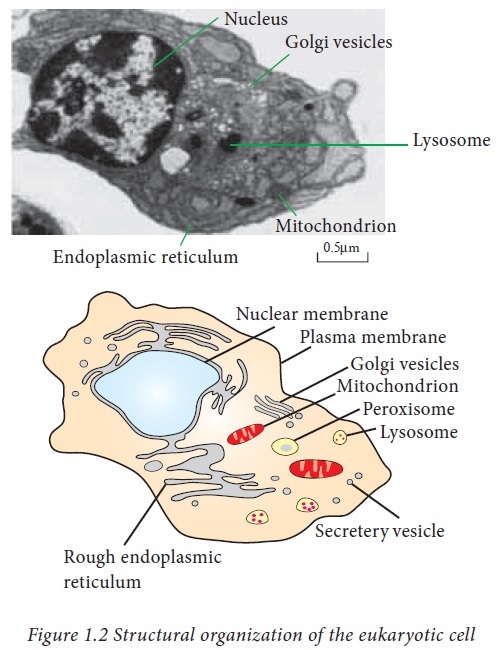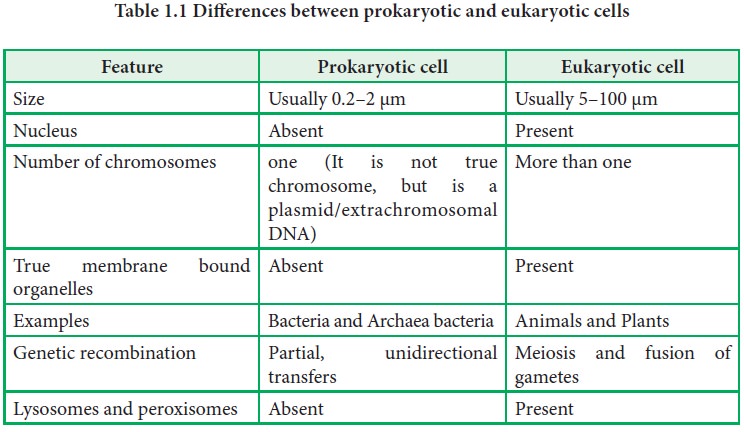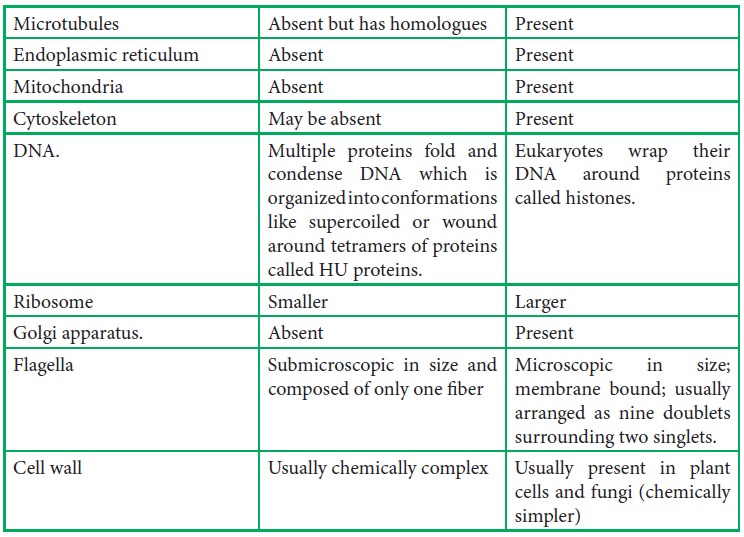Chapter: 11th Biochemistry : Chapter 1 : Basic Concepts of Bio Chemistry and Cell Biology
Two major classes of cells: prokaryotic and eukaryotic
Two major classes of cells:
prokaryotic and eukaryotic
Prokaryote
and eukaryote comes from the Greek word where ‘Pro’ means ‘before’ and ‘Eu’
means ‘true’. The term “Karyon” typically means that a rounded or oval mass of
protoplasm within the cytoplasm of a plant or animal cell; it is surrounded by
a nuclear envelope, which encloses euchromatin, heterochromatin, and one or
more nucleoli and undergoes mitosis during cell division.
The
prokaryotes are unicellular, in general eubacteria (true bacteria) and
archaebacteria (ancient bacteria). The cell encloses a semi-liquid component
with a few suspended structures called ribosomes. Within the membrane is the
cytoplasm, which contains the cytosol-a semi-liquid concentrated solution or
suspension with the structures suspended within it. In prokaryotes, this
semi-liquid cytoplasm is not divided into compartments, and carries the genetic
information. Freely existing DNA molecules and ribosomes which are involved in
protein synthesis are found in the cytosol. A prokaryotic cell can have
flagella for swimming purpose and the cell may have pili that help the organism
to get attached to other cells or surfaces.
The
eukaryotes are ten times larger than the prokaryotic cells but are endowed with
the unique feature of ‘compartmentalization’. The specialized functions of a
eukaryotic cellsare carried out in organelle-the membrane-surrounded structures
lying within the surrounding cytoplasm. Major organelles common to most
eukaryotic cells are the mitochondria, which specialize in oxidative
metabolism; the endoplasmic reticulum, a folded membrane structure rich in
ribosomes; the Golgi complex, membrane-bound chambers that function in
secretion and the intracellular shuttling of new proteins; and the nucleus. The
nucleus of a eukaryotic cell contains the cell’s genetic information, encoded
in DNA that is packaged into chromosomes. A portion of this DNA is subpackaged
into a dense region within the nucleus called the nucleolus. Surrounding the
nucleus is a nuclear envelope, pierced by pores through which the nucleus and
cytoplasm communicate.




Related Topics